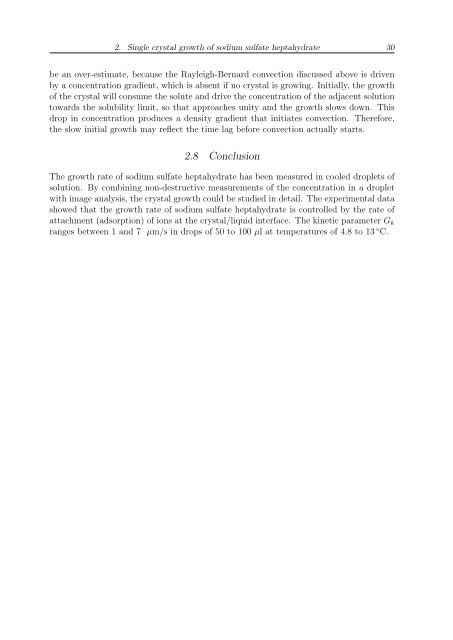P - Technische Universiteit Eindhoven
P - Technische Universiteit Eindhoven
P - Technische Universiteit Eindhoven
You also want an ePaper? Increase the reach of your titles
YUMPU automatically turns print PDFs into web optimized ePapers that Google loves.
2. Single crystal growth of sodium sulfate heptahydrate 30<br />
be an over-estimate, because the Rayleigh-Bernard convection discussed above is driven<br />
by a concentration gradient, which is absent if no crystal is growing. Initially, the growth<br />
of the crystal will consume the solute and drive the concentration of the adjacent solution<br />
towards the solubility limit, so that approaches unity and the growth slows down. This<br />
drop in concentration produces a density gradient that initiates convection. Therefore,<br />
the slow initial growth may reflect the time lag before convection actually starts.<br />
2.8 Conclusion<br />
The growth rate of sodium sulfate heptahydrate has been measured in cooled droplets of<br />
solution. By combining non-destructive measurements of the concentration in a droplet<br />
with image analysis, the crystal growth could be studied in detail. The experimental data<br />
showed that the growth rate of sodium sulfate heptahydrate is controlled by the rate of<br />
attachment (adsorption) of ions at the crystal/liquid interface. The kinetic parameter G k<br />
ranges between 1 and 7 µm/s in drops of 50 to 100 µl at temperatures of 4.8 to 13 ◦ C.
















